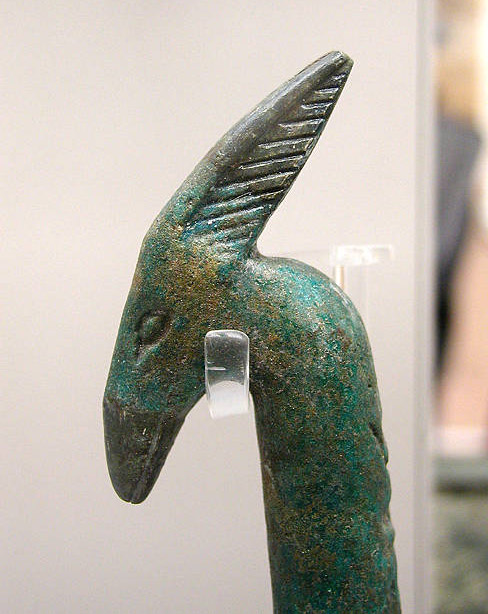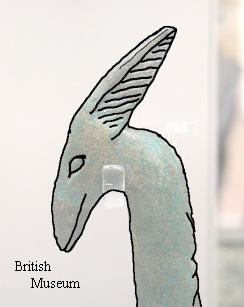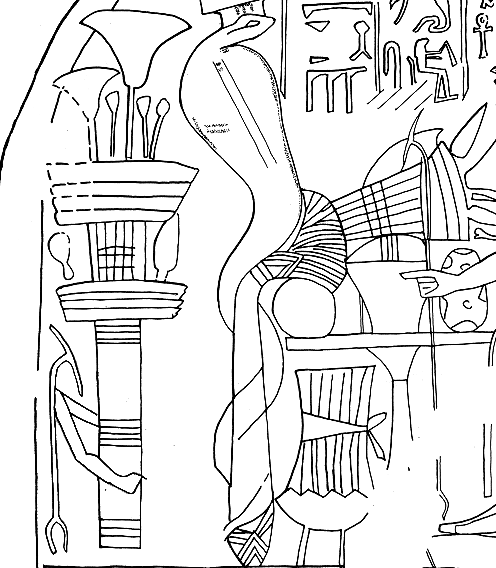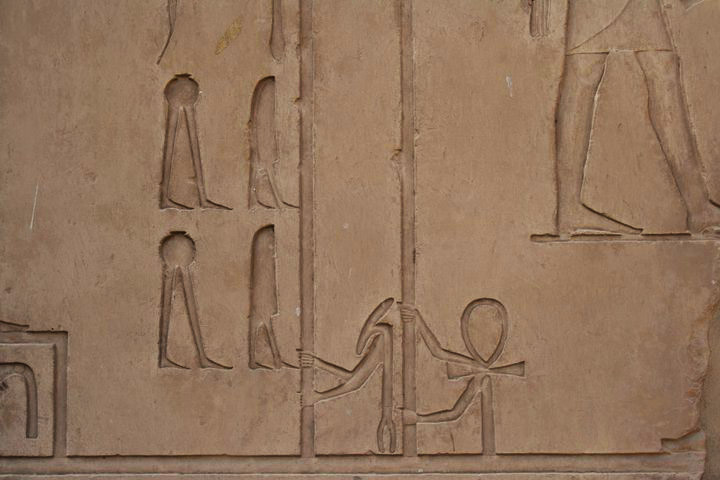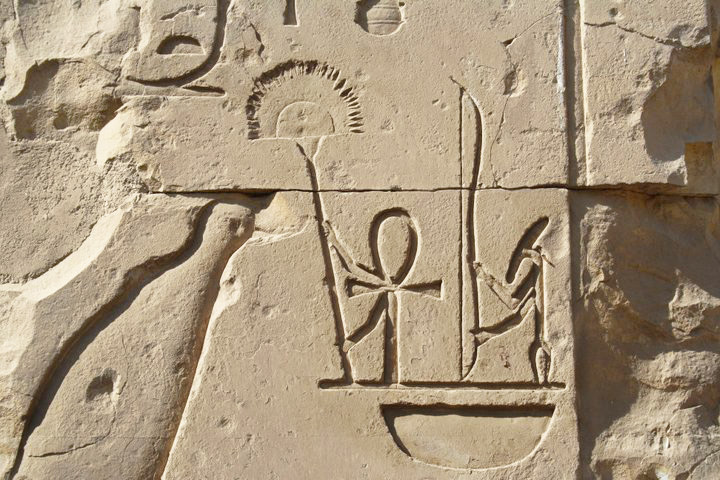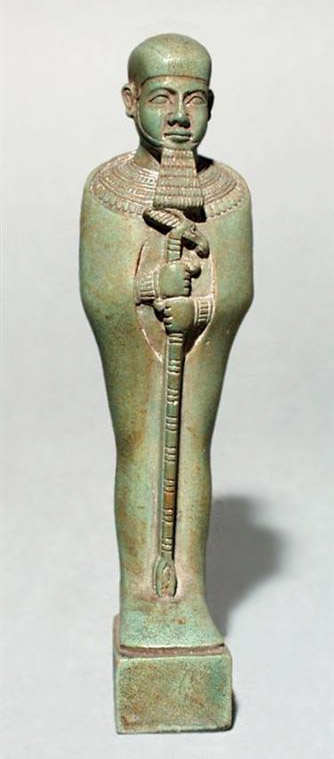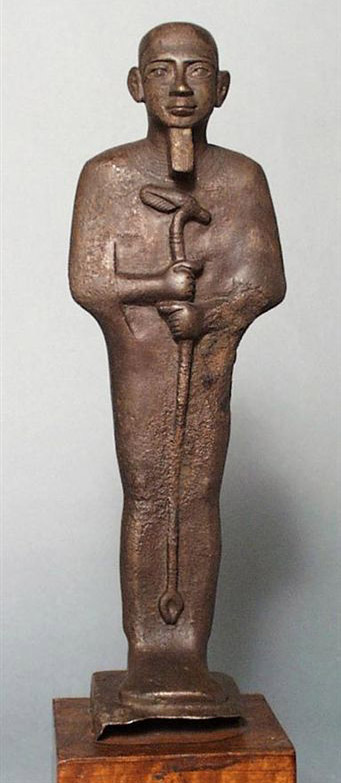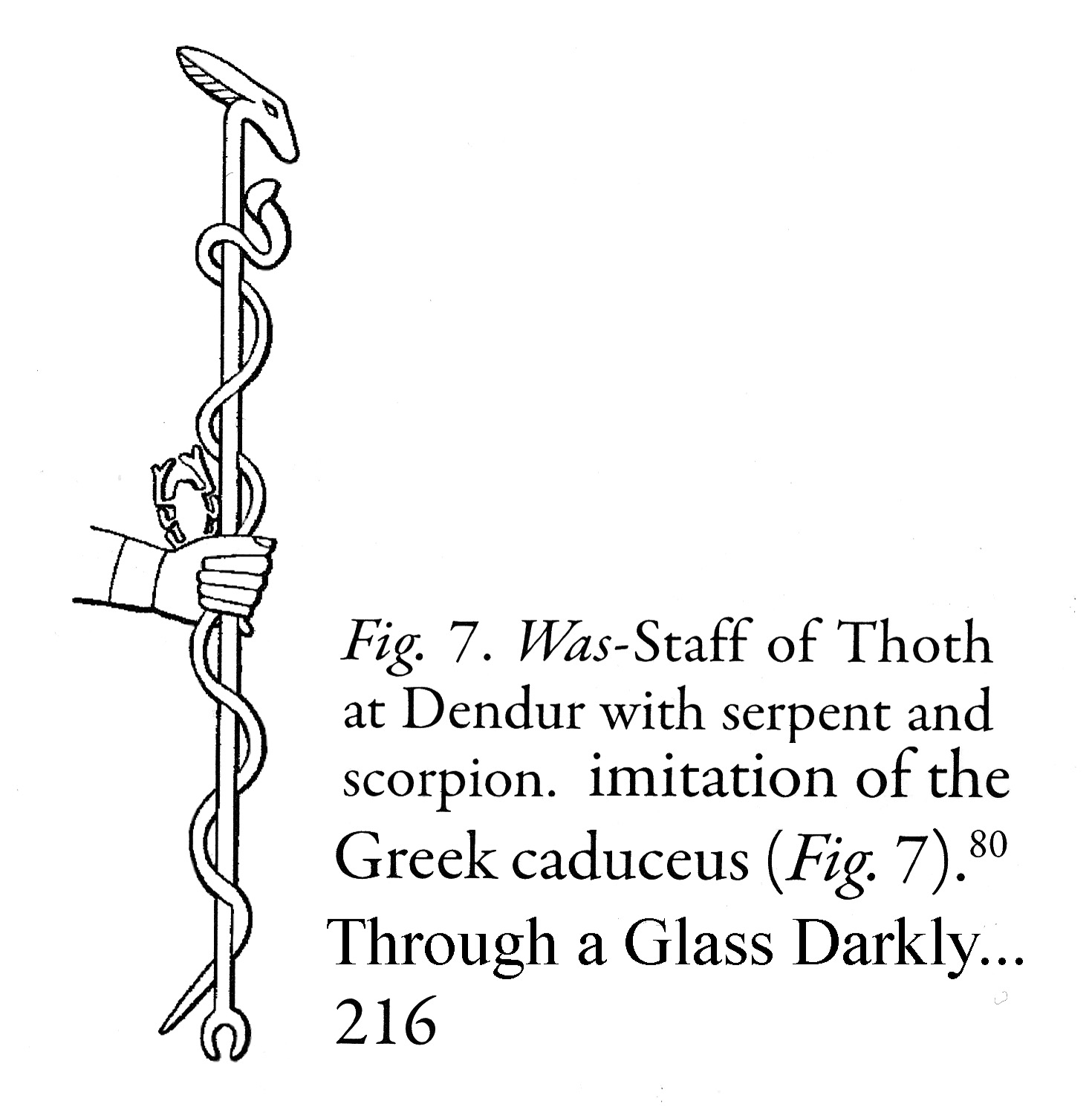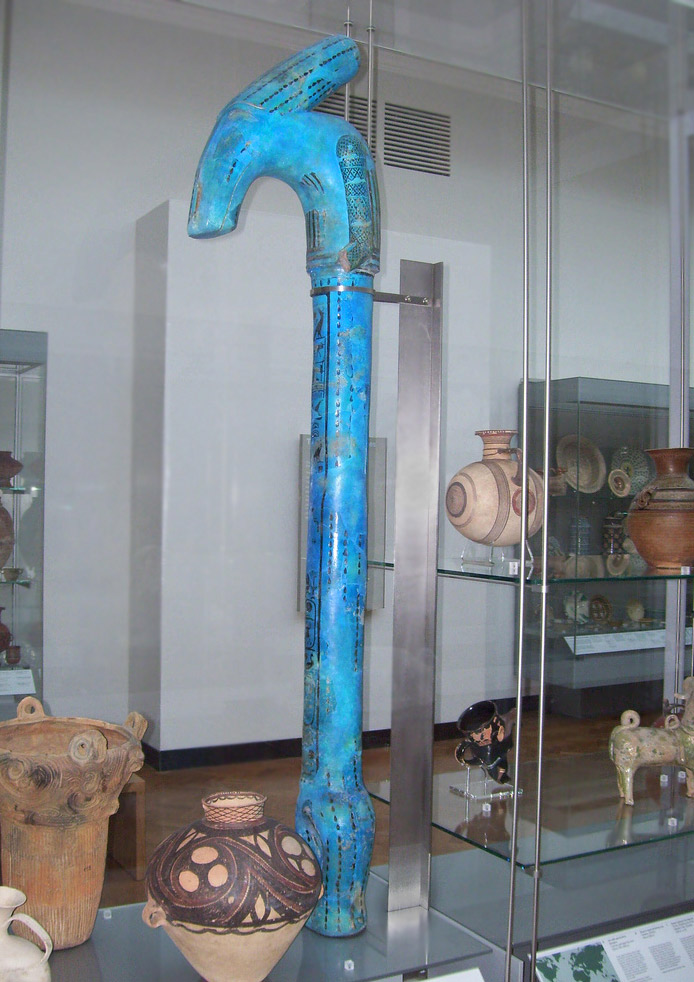
Was (ritual sceptre or staff) of turquoise-glazed composition or faience
Egypt, New Kingdom: 18th Dynasty, Reign of Amunhotep II
Weight: 65.0 kg, Height: 215.9 cm, Width: 25.0 cm, Depth: 48.2 cm
Victoria and Albert Museum, #437-1895
This view courtesy of Mogg Morgan
|
While tracking down the source of an image TeVelde used, I found info on the huge was scepter found at the ancient Temple of Set in Naqada:

(Note: The Victoria and Albert Museum used to be called "South Kensington Museum" until it was renamed in 1899. Thanks to Jon Bodsworth via 'cyberlynx' _wAs Sceptre Theories_, and Mogg Morgan of Ombos - House of Life we do have some idea of its appearance:
|
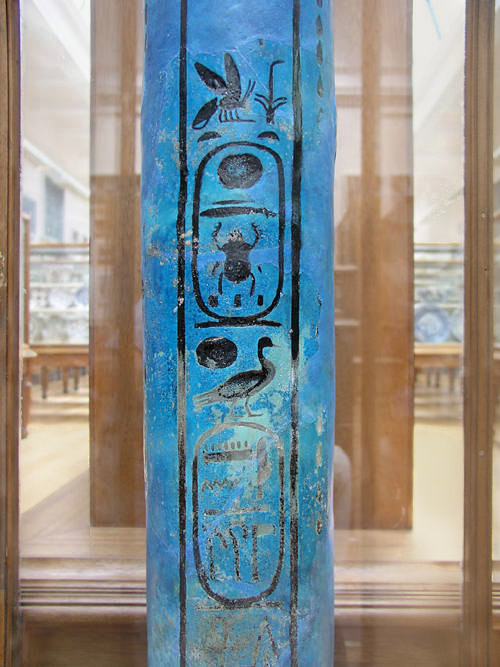
Nsw-bity <Aakheperure> Sa Ra <Amenhotep Heka Iunu> (di ankh mi ra djet)
[He] of sedge [and] bee" ("King of Upper and of Lower Egypt"), <Great are the Manifestations of Ra>, Son of Ra, <Amun is Satisfied, Ruler of Heliopolis>,
(Further down the scepter: Given Life like Ra Forever)
The above photo © Jon Bodsworth.
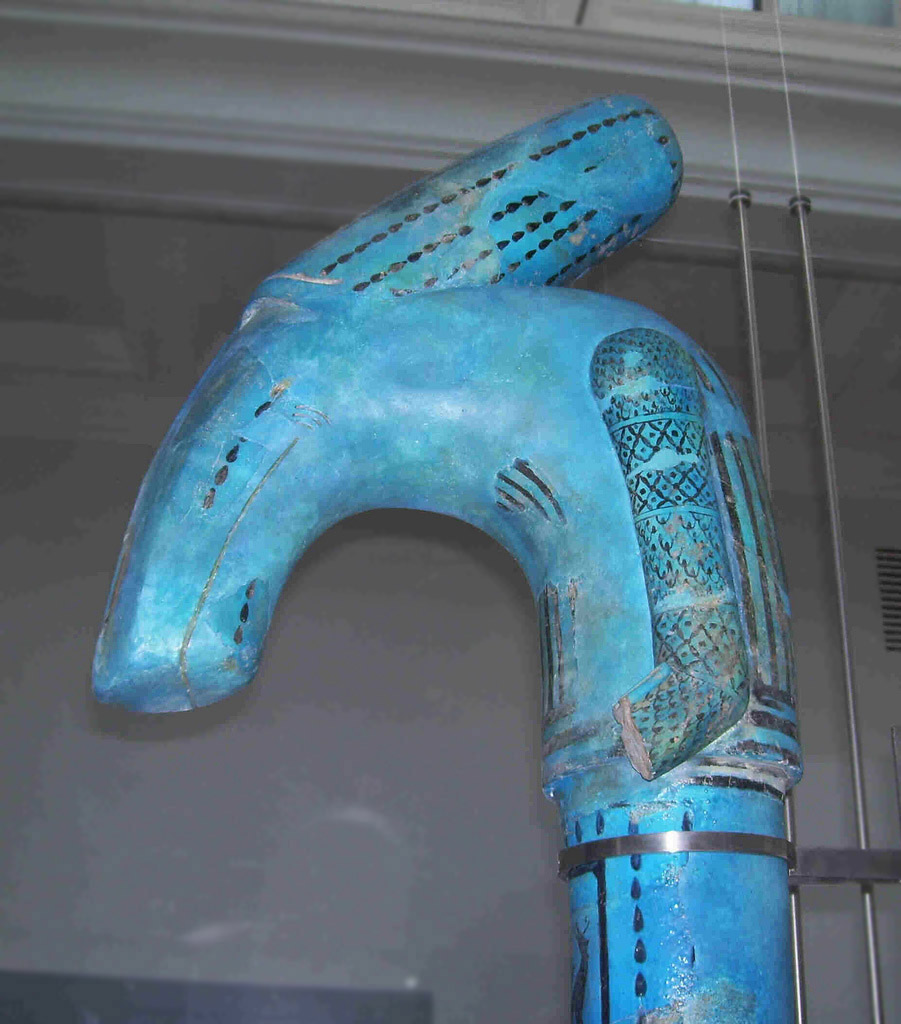
This view courtesy of Mogg Morgan of Ombos - House of Life
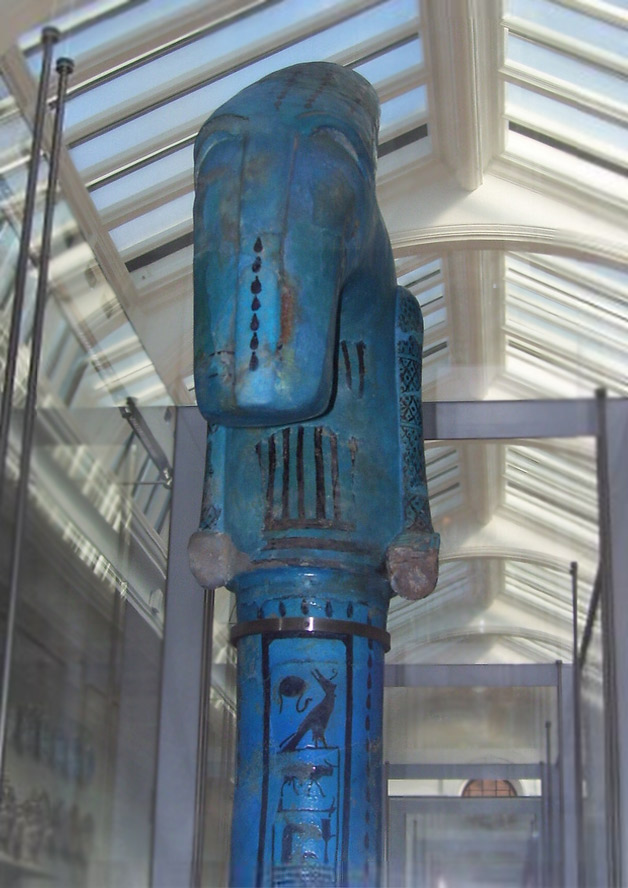
Frontal view also Mogg Morgan
Could the scepter have had Ka arms when it was new?
"The arms are broken off at the elbows but their acute angle suggests that they might originally have held a standard or have been raised in adoration." (Museum website info)

View of forked bottom
by Ibeca Francisco Jose Neves
|
I was privileged to see a complete scepter while seeing the treasures of King Tut in 2005 at the Lacma museum:
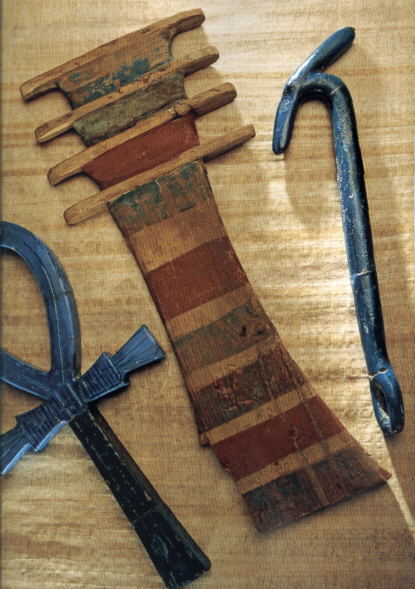 faience Ankh, wooden Djed, and faience Was scepter
(Pardon the book scan. I would have had my own photo, if it had been allowed!). So this scan comes from the companion book to the exhibit, _Tutankhamun and the Golden Age of the Pharoah_, photos by Kennett Garrett and text by Zahi Hawass. Hawass doesn't accept the many conclusions of other scholars and declares the identification with Set not "identified satisfactorily".. However, the vast majority agree, it is Set. Also, look at the close up of its head. It has Set's eyes and snout, and the top part is his ears seen in direct profile, so that two become appearing as one:
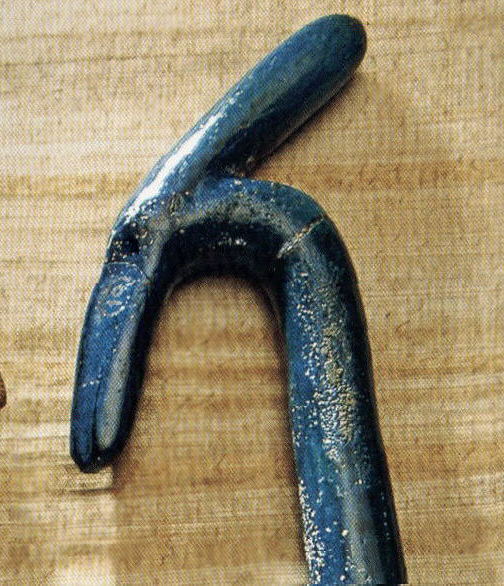 This is Set's head
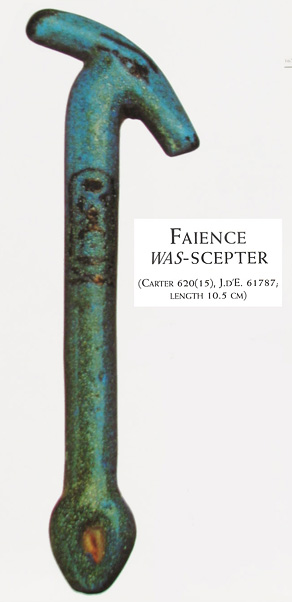 Just over 4 inches (10.5cm) at the Cairo museum #61787 Photo from Tutankhamun, text T. G. James, photos A. DeLuca Large detail underneath
Another Was scepter, this one at the British Museum:
|
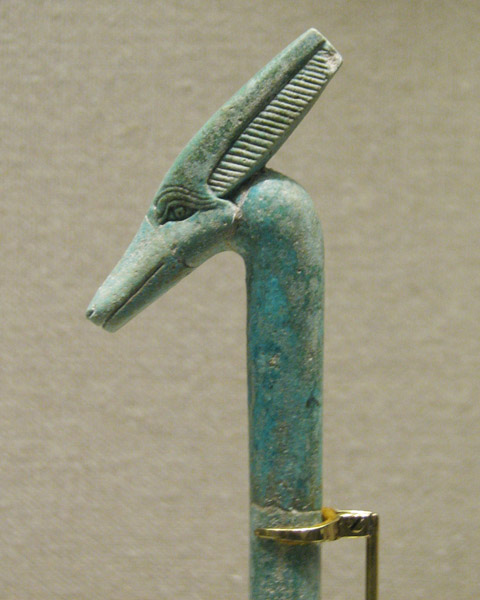
Top and bottom (center part restored) of a faience votice was-scepter, excavated at Faras in Nubia, Late period, MMA 41.2.9
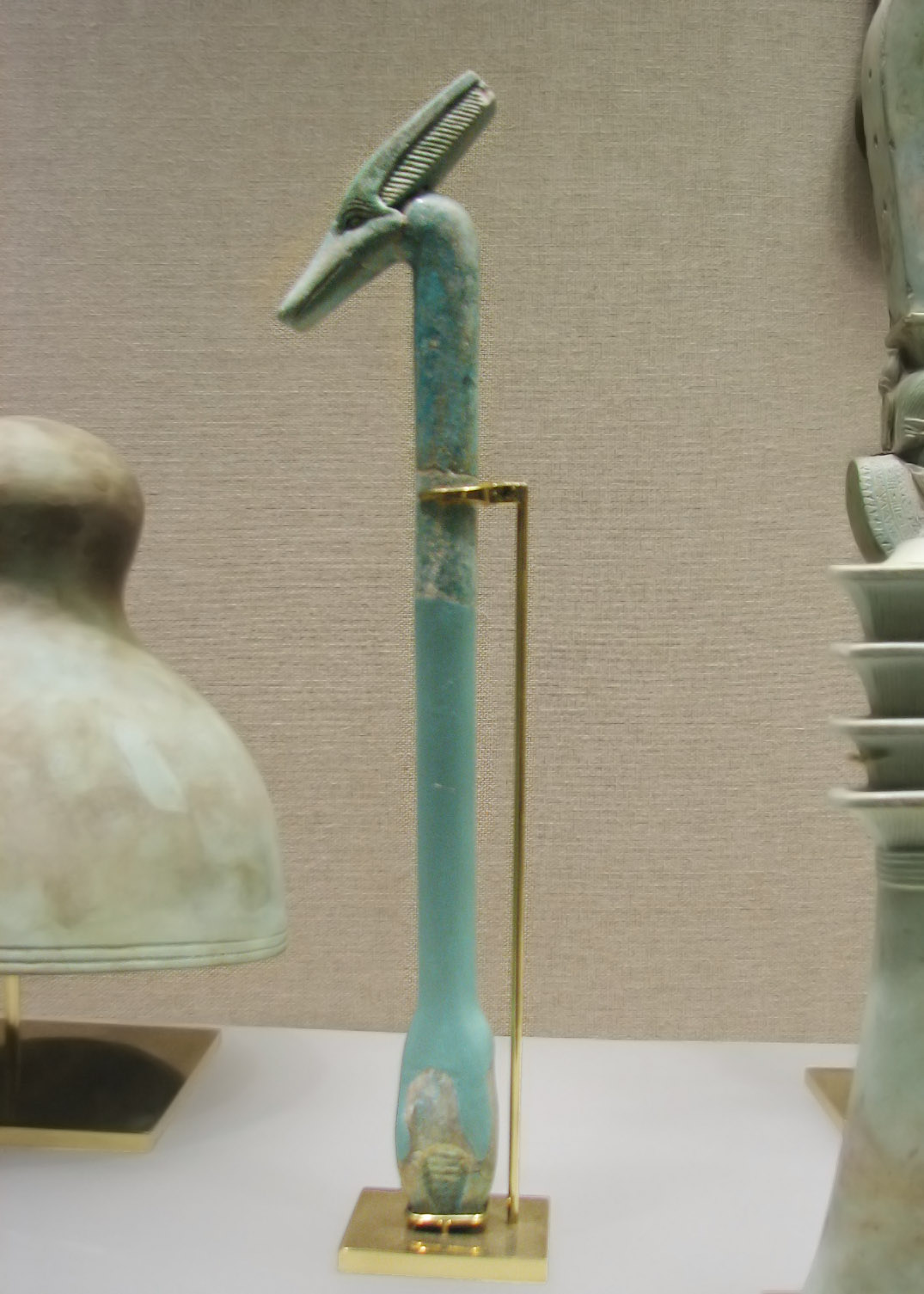
(Full 5x7 size underneath)-(photo credit Joan Lansberry (this one 2008, above one 2009)
The Brooklyn Museum also has a was scepter:
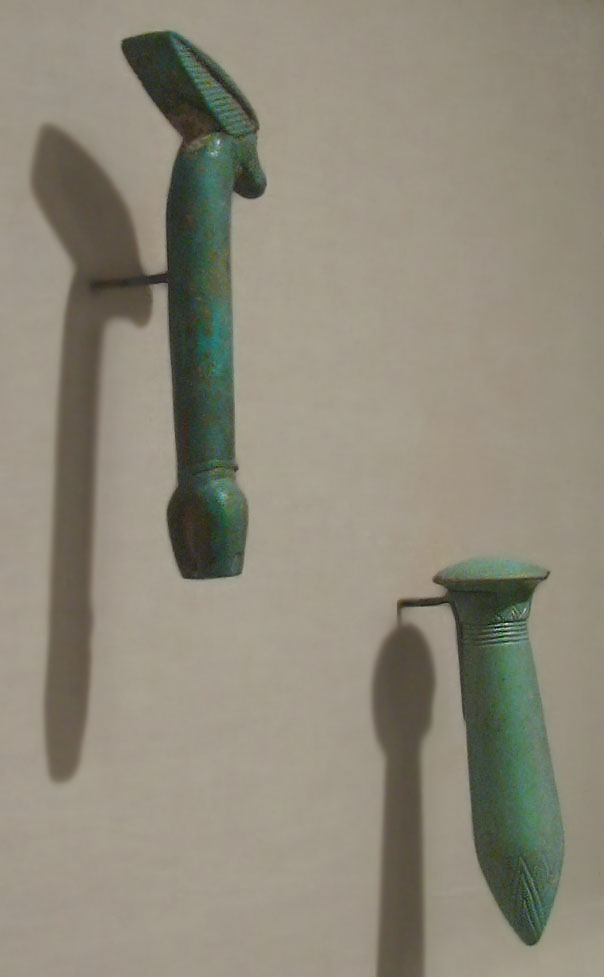
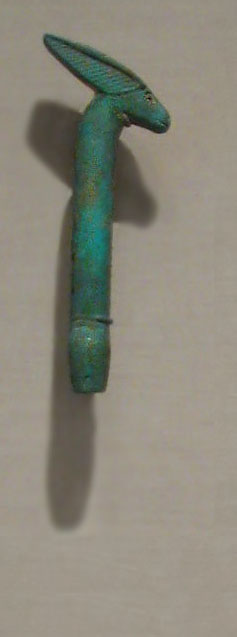
Was-Scepter, Wadj-Scepter, Faience
Late Period - Macedonian Period, circa 664-305 B.C.E)
Provenance not known
Broolyn Museum 37 1650E, 37 886E, Charles Edwin Wilbour Fund
Photo © Joan Lansberry, May 2008
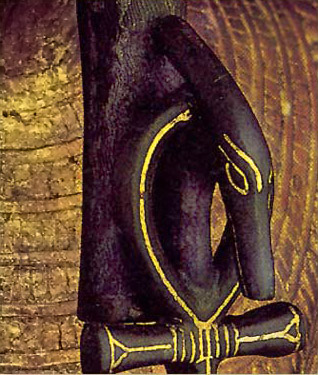
This intriguing was and ankh seen at touregypt.net,
no attribution given.
However, while perusing Tutankhamun, text T. G. James, photos A. DeLuca, I found the source:
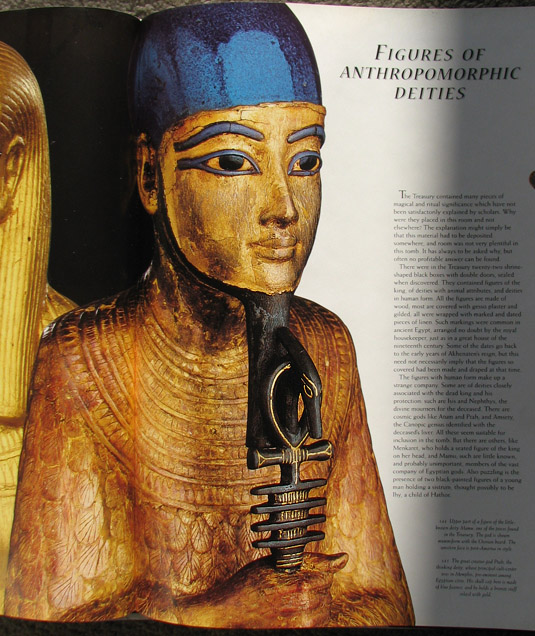
Gilded wood statue of Ptah, with bronze was scepter, inlaid with gold.
The base titles him, Ptah, Lord of Ma'at, and also names Tutankhamun
That base is also shaped like the hieroglyph for Ma'at (truth, balance, connective justice.)
Carter 291 A, J.d'E 60739 (Cairo Museum), Height 60.2 cm (almost 24 inches)

Traces from various photos. The djam scepter is from the funeral procession of Nespekishuti at the Oriental Museum in Chicago
| There are also tiny amulets of the was scepter: |
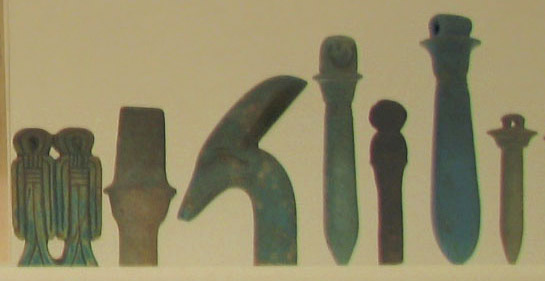
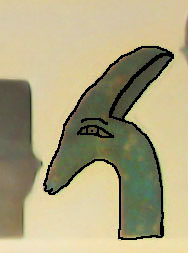
Found on a shelf with lots of tiny amulets at the Met museum, details unknown
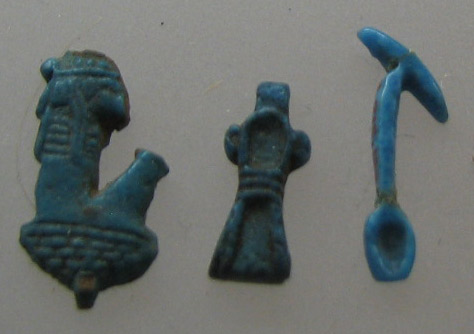
These amulets at the Met museum were not even an inch long!
I didn't capture info, but I think I found them in the 18th dynasty study room
|
And here's another Was found at the Met draped with a Uraeus snake which is wearing a Shen symbol for eternity:
|
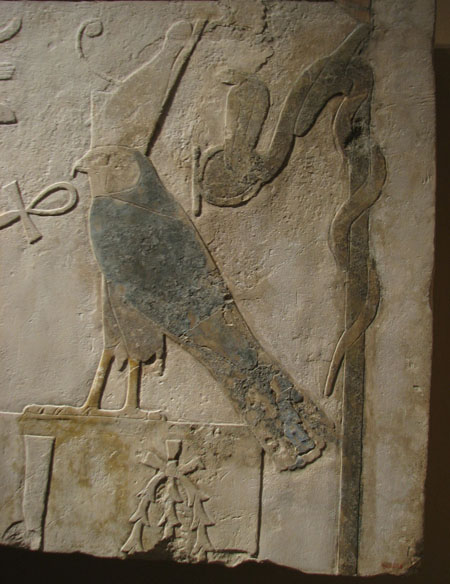
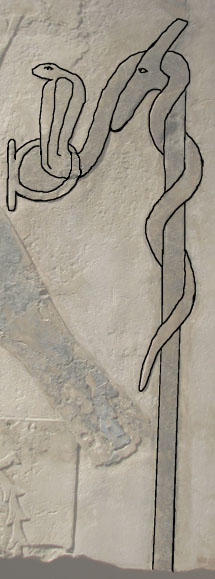
From a relief of Amenemhat I and Senwosret I
Dynasty 12, c. 1991-1962 B.C.
From Lisht, North Pyramid, MMA, Rogers Fund 1908
Limestone

Personified was sign, temple of Seti I at Abydos. Nineteeth Dynasty,
_Reading Egyptian Art_, Richard Wilkinson



